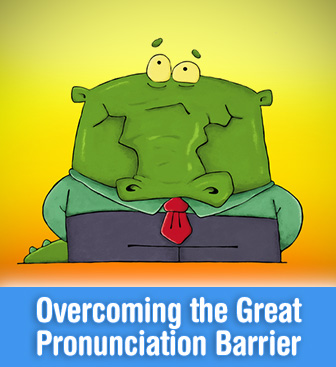7 Worst Pronunciation Mistakes ESL Students Make Around the World


For ESL students, particularly for adult learners, pronunciation is a big hurdle to overcome. It is especially discouraging when they discover that though pronunciation can be improved greatly, they will never lose their foreign accent completely. English phonemes also prove to be particularly tricky as there is often no connection between the sound and the way it is spelled (unlike other languages where the phoneme and its spelling are a closer match). Here are some tips to help your students overcome the pronunciation barrier:

While “improving pronunciation” as a goal might seem unattainable, helping your students improve their pronunciation one phoneme at a time is much more doable. Instead of taking up most of class time practicing pronunciation, practice a different phoneme every day, or every week.
The schwa sound [ə] is the neutral vowel sound that typically occurs in unstressed syllables, for example in words like choc(o)late, sep(a)rate, cam(e)ra, elab(o)rate, etc… There are languages that pronounce these syllables differently and students might be tempted to pronounce them as they do in their native tongue (this is usually the case with Spanish speakers, where the central o in “chocolate” is pronounced clearly). Teach students to be aware of the schwa sound and learn to identify it as it will be tremendously useful in improving their pronunciation.
Students should learn that the same consonant combination may have different sounds, for example the ch in chicken and character. The sound [k] in character, in fact, may be spelled with a k, ck, c, ch or que. The th combination is another example: it is pronounced [ð] in this, that, these, those; but it is pronounced [θ] in thin, thank, think, theory, for example. The gh combination is yet another example, as it pronounced as a g (ghost) or f (rough). Practice each of these combos and others one at a time.
Teach students to identify different ways to spell the same sound. Examples of these are the ai sound in mine, buy, pie, rye. Homophones are the perfect example of this: buy and by; pair and pear; cell and sell, etc… There are lots of games and activities you can do with your class with homophones.
Show students how the addition of an -e at the end of a word changes its pronunciation: bit - bite, dim - dime, pin – pine. See what happens in this set of words: cut – cute, hug - huge, and so on.
Students will remember some contrasts much more easily if you present them in pairs: live - leave; three – tree; slip – sleep; and so on. These pairs include words that students often mispronounce, quite simply because in some cases they won’t even hear the difference, much less be able to reproduce it. The more you practice them in class, the better the chances for improvement. Introduce a few pairs at a time and practice till all students can hear the difference and reproduce it. Don’t forget to lighten it up with humor every now and then. It is not unlikely for teachers who have Spanish speaking students to hear a student say he drinks orange “shoes” in the morning. In that case reply, “You drink shoes? Really? I believe you will obtain more vitamin C from orange juice!” Teach students to laugh at their own pronunciation mistakes.
It’s hard for students to simply imagine the difference in spelling, not to mention remember all the different phonetic symbols; try to use visual aids like consonants flashcards or IPA flashcards. Use them for introduction and practice, and make sure students become familiar with the symbols.
Don’t forget to play games with them. Remember that pronunciation is very hard and very frustrating for lots of ESL students. Games will certainly lighten up a difficult lesson. Some great options are Bingo or Four in a Row.
You won’t always be around to tell a student how a word is pronounced. Teach them where to find the pronunciation for a word in the dictionary. The best tool in this case is a dictionary app with sound, so that the student can hear the pronunciation with a simple click. These tools help students become more independent and more responsible for improving their pronunciation.
Ask them to try to identify the different phonemes in different words they hear. Give them the right tools and they will make great strides towards improving their pronunciation!
How do you help your students improve their pronunciation? If you have any other tips to add, share them below!